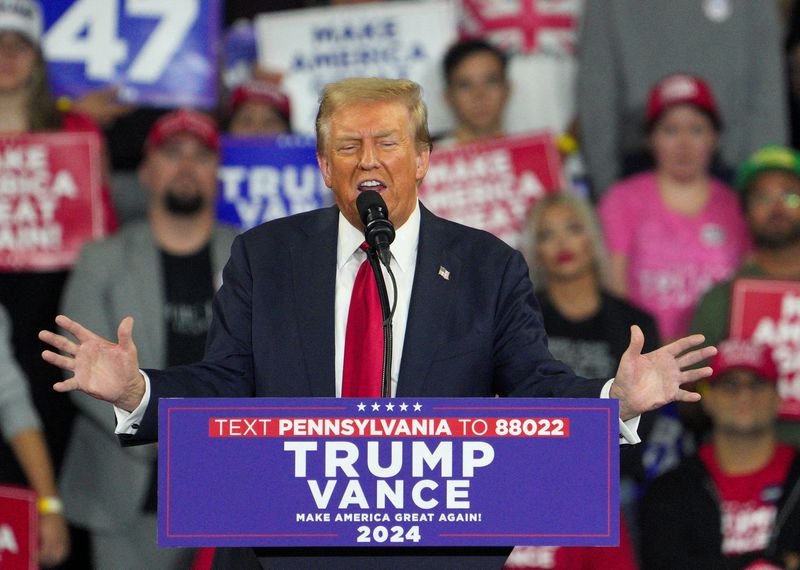In recent political discourse, Republican presidential candidate Donald Trump and his party members have attributed rising housing costs in the U.S. to immigration, leveraging this narrative as part of their broader campaign strategy. This assertion aligns with the sentiments of many voters, as demonstrated by an August Reuters/Ipsos poll indicating that unaffordable housing is a critical economic concern for Americans. Trump’s rhetoric, which positions him against the backdrop of skyrocketing costs, has resonated with his base as he advocates for stricter immigration policies. Notably, concerns about housing affordability are not isolated, as they rank just behind worries about income not keeping pace with inflation. In contrast, Vice President Kamala Harris, representing the Democratic perspective, has focused her campaign on boosting housing availability and affordability through new construction incentives and tax reforms aimed at assisting renters and potential homebuyers.
The backdrop to this political narrative is a significant shortage in the housing market, exacerbated by decreased construction rates following the 2008 financial crisis. According to data from Freddie Mac and Moody’s Analytics, the U.S. is facing a shortfall of housing units estimated between 1.5 million and 2.9 million. The aftermath of the COVID-19 pandemic has further inflated housing prices, with Apartment List reporting a 23% increase in rents since 2020. Over the past five years, home prices have surged 50% while rents gained 35% according to Zillow. Amidst these figures, Trump and others in his party have used immigration statistics to argue that the influx of people directly burdens housing supply, suggesting a straightforward cause-and-effect relationship between demographic changes and soaring costs.
However, research by various academics and institutions indicates that the impact of immigration on housing prices is minimal. Typically, a 1% increase in a city’s population corresponds with a similar rise in rents and housing prices. However, economists note that this effect pales in comparison to other critical market forces such as overall inflation, increased demand for larger homes driven by remote work, and the long-term stagnation in construction rates. Albert Saiz, director of the Urban Economics Lab at MIT, contends that immigration does not account for the primary factors influencing the housing market, stating that other dynamics carry far more weight in explaining current trends.
Further supporting this perspective, Madeline Zavodny, an economist at the University of North Florida, highlighted that while immigration can contribute to rent increases, especially from undocumented workers, these migrants also play a crucial role in the construction sector. This labor influx can yield a net positive effect on housing supply. Zavodny’s observations imply that the narrative connecting immigrants solely to demand overlooks their substantial role in facilitating housing development. Julia Gelatt from the Migration Policy Institute also critiqued the notion that the housing market operates under a static framework, emphasizing that the contributions of immigrants to the workforce, especially in construction, ultimately enhance housing availability rather than solely intensifying competition among renters and buyers.
The political implications of framing immigration this way can be profound, particularly in elections where economic issues are prominent. Barrett Marson, a Republican strategist from Arizona—a state deeply affected by immigration debates—suggests that voters often understand the complexities behind the statistics yet may still respond to fear-based appeals. The emotional resonance of blaming immigrants for housing shortages, regardless of the factual accuracy, can be politically advantageous in a climate where cost of living dominates public concerns. As such, while data may dispute the correlation drawn by Trump and his allies, the effectiveness of their messaging within the current electoral landscape cannot be dismissed.
In summary, while Donald Trump’s campaign has pointed to immigration as a significant driver of rising housing costs, research contradicts this narrative by suggesting that the actual influence of immigration on housing prices is minimal. The real culprits include a pronounced lack of housing supply due to stagnation in construction rates and broader economic factors like inflation. Moreover, many economists emphasize the positive role that immigrants play in increasing housing supply through their labor in the construction sector. As public discourse evolves in the lead-up to the election, the interplay between fact and political rhetoric will remain a critical aspect of how economic challenges, such as housing affordability, are framed and addressed in the political arena.

